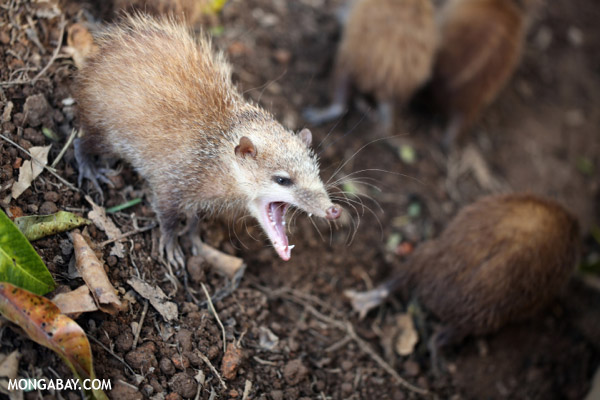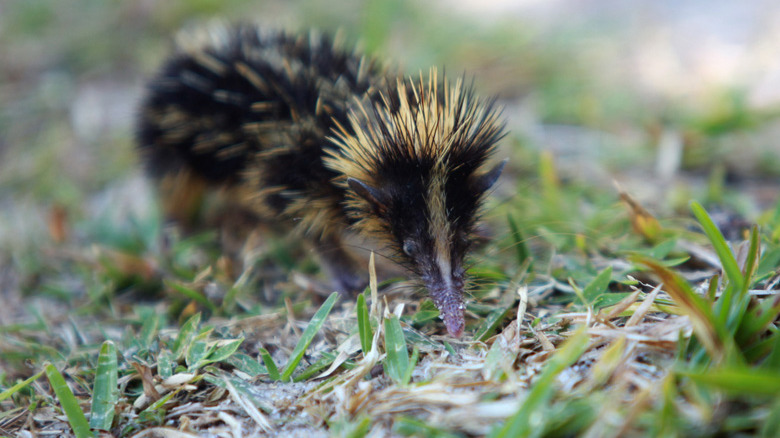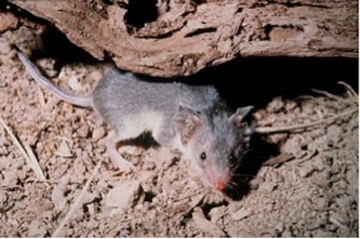By David Brown
When people think of bees, they usually think of honey bees. However, there are over 20,000 kinds of bees on Earth! Scientists describe new species of bees often, so there are likely many thousands more species yet to be described.
Not all bees are yellow and black like honey bees. There is a literal rainbow of bee colors. Not all bees are striped like honey bees.
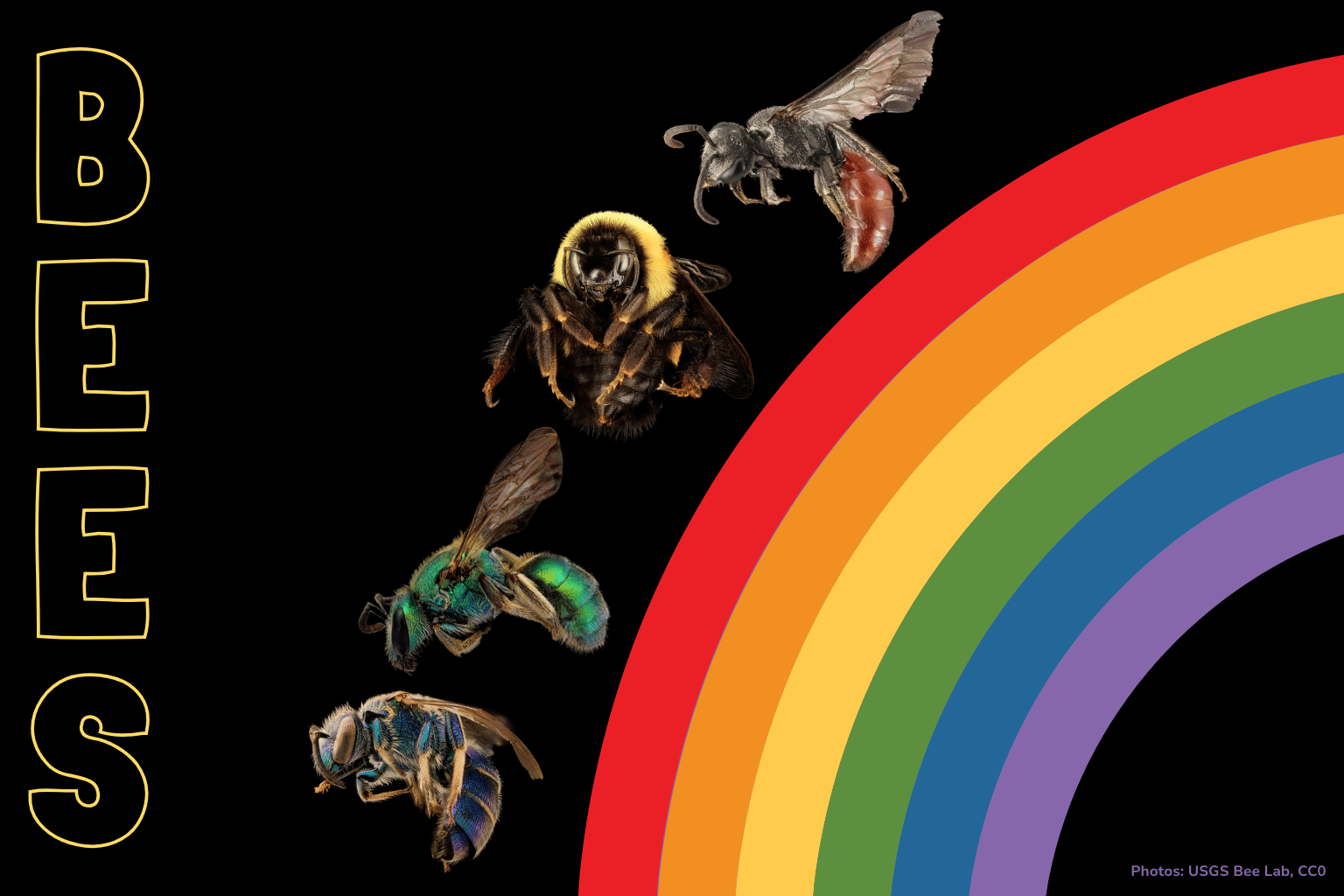
Why are bees colorful?
Bees are so colorful for different reasons.
Some bees have bright colors to warn potential predators that they can hurt or kill them with their stings. These colors are called aposematic and say “STAY AWAY!”
Some bees that cannot sting are colored similarly to stinging bees with aposematic coloration. Stingless bees take advantage of the warning color by making predators think they can hurt them, when they actually cannot. Faking warning coloration is called mimicry.
Some bees live among colorful flowers, and their coloration may be a form of camouflage.
Colorful bees live all over the world. There seem to be many more colorful bee species in tropical areas than temperate ones. That may be because there are many more colorful flower species in the tropics than in temperate areas, giving bees more camouflage opportunities.
Can bees see in color?
Bees can see color, but they see it differently than we do. Bees cannot see the color red. Their eyes do not have the photoreceptors needed to pick out wavelengths of red light.
Bee eyes are very good at picking up ultraviolet, blue, and green colors. These colors help bees see flowers much more vividly than humans can. Some flowers have special ultraviolet colored areas near their pollen and nectar that tell bees “LAND HERE!” Bees know they can easily get their food in these landing areas. In return, bees pollinate the flowers.
A bee rainbow
Here are some species, which show the wide variety of colors bees can be:
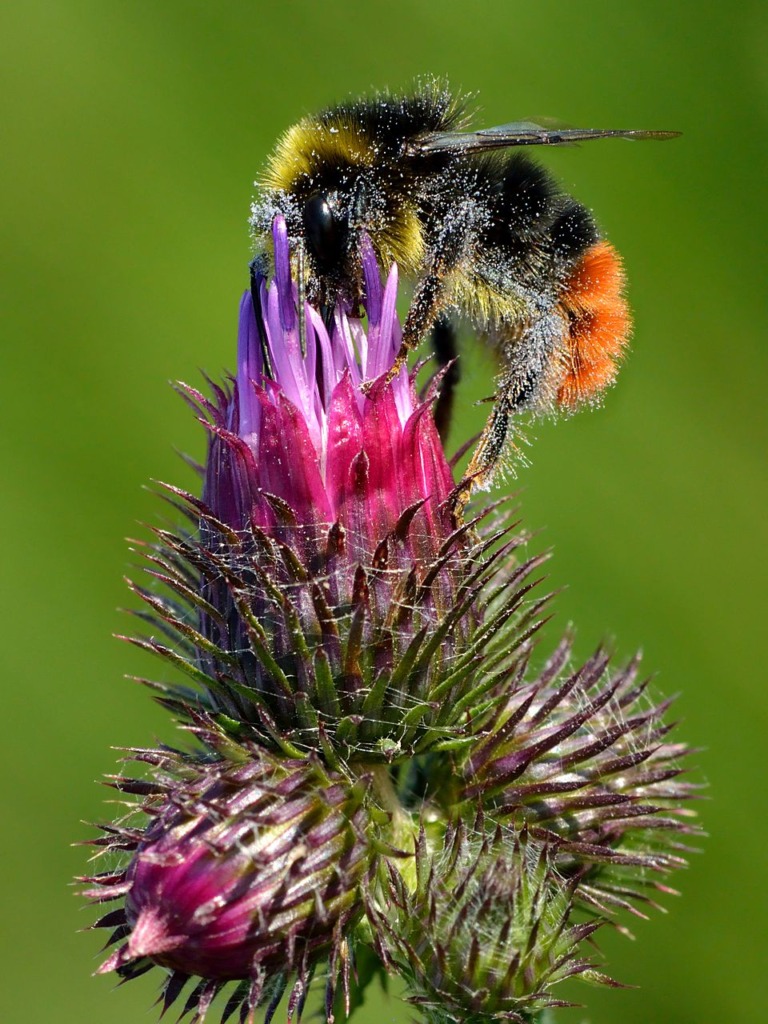
1. A red bee
Bombus lapidarius, the red-tailed bumblebee, lives in meadows across southern Europe. The red color on the back end of this bee is aposematic, and warns potential predators not to mess with this bee.
Image by Ivar Leidus via Wikimedia Commons (CC BY-SA 4.0).
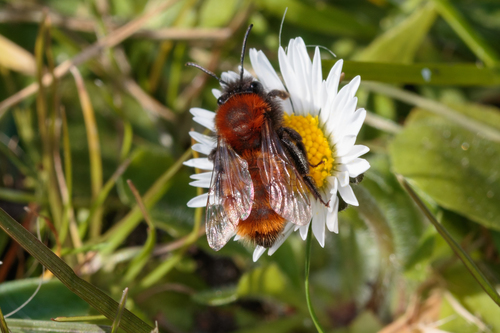
2. An orange bee
Andrena fulva is an orange bee also known as the tawny mining bee. This bee lives in Europe, from England to Russia.
Image by Iain Robson via iNaturalist (CC0).

3. A yellow bee
Bombus fervidus is known as the golden northern bumble bee. This bee is bright yellow and this color is aposematic – it tells predators to stay away, or they will be stung. The golden northern bumble bee lives across northern North America, including Alaska and Canada.
Image by Andrew C via Wikimedia Commons (CC BY 2.0).
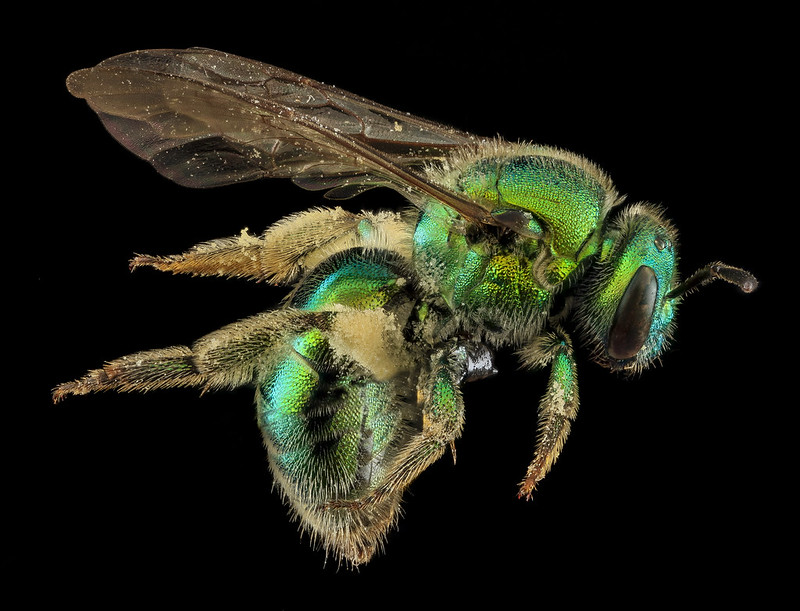

5. A blue bee
The Euglossa hyacinthina bee is blue. It lives in rainforests in Costa Rica and Nicaragua.
Image from Wcislo D, Vargas G, Ihle K, Wcislo W (2012) via Wikimedia Commons (CC BY 3.0).
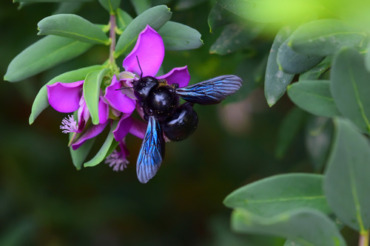
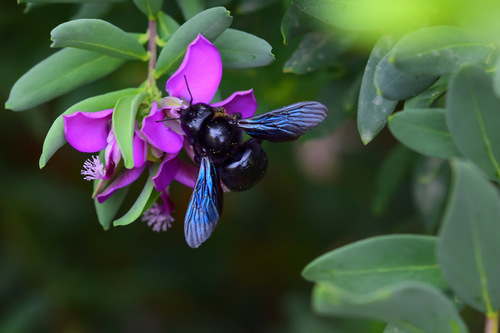
6. A violet bee
Xylocopa violacea is also known as the violet carpenter bee. This violet bee species lives across Europe from England to Germany.
Image by Molaye Mohamed-Ahid Nuez via iNaturalist (CC BY-NC 4.0).
More learning resources
- We need bees. How can you help?
- Are any bee species endangered?
- Are wasps and hornets types of bees?
- Do all bees sting?
- What kind of ecosystem has the most bees?
- Interview with bee photographer, Krystle Hickman
- A famous orchid and pollinator from Madagascar
- Bats in Indonesia help people by pollinating crops
Parents and educators
You may also enjoy exploring these resources:
- ASU Ask a Biologist: Bee Bonanza (A wonderful educational resource for kids about honey bees)
- United Nations: World Bee Day (Learn about the importance of pollinators and how we can individually and collectively help bees)
- Our World in Data: How much of the world’s food production is dependent on pollinators? (Explore data and charts about about the importance of pollinators for our food crops)

